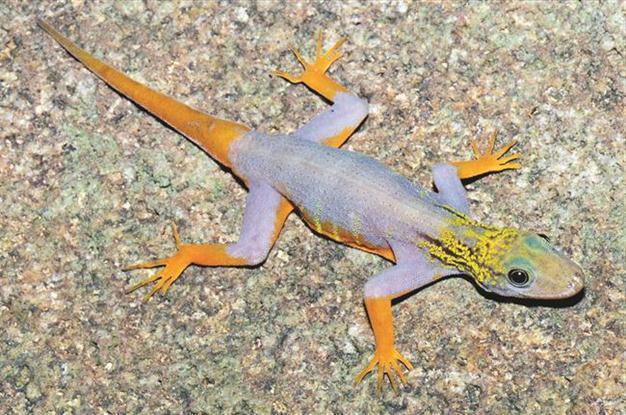New species found every other day
WASHINGTON - Reuters

A new multi-colored gecko is seen in Vietnam. REUTERS photo
A wildly-coloured gecko, a fish that looks like a gherkin, and a monkey with an Elvis-like hairstyle are among the more than 200 new species discovered in the Greater Mekong region last year, environmental group World Wild Fund for Nature (WWF) said yesterday.
The area’s diversity is so astonishing that a new species is found every two days, but regional cooperation and decision-making must take centre stage to preserve its richness, the group added.
The dangers posed to local wildlife were highlighted earlier this year, when WWF said that Vietnam’s Javan rhinos have been poached into extinction.
“While the 2010 discoveries are new to science, many are already destined for the dinner table, struggling to survive in shrinking habitats and at risk of extinction,” said Stuart Chapman, Conservation Director of WWF Greater Mekong, in a statement.
Among the new species highlighted in the report “Wild Mekong” is a gecko with bright orange legs, a yellow neck, and a blue-gray body with yellow bars on its bright orange sides, discovered on an island in southern Vietnam.
Then there is a black and white snub-nosed monkey whose head sports an Elvis-like hairstyle, found in Myanmar’s mountainous Kachin state. Locals say the animal can be spotted with its head between its knees in rainy weather as it tries to keep rain from running into its upturned nose.
Other featured creatures among the 208 new finds include a lizard that reproduces via cloning without the need for male lizards, a fish that resembles a gherkin, and five species of carnivorous pitcher plant, some of which lure in and consume rats and even birds.
“Mekong governments have to stop thinking about biodiversity protection as a cost and recognize it as an investment to ensure long-term stability,” Chapman said.
“The region’s treasure trove of biodiversity will be lost if governments fail to invest in the conservation and maintenance of biodiversity, which is so fundamental to ensuring long-term sustainability in the face of global environmental change.”
The Greater Mekong region covers Cambodia, Laos, Myanmar, Thailand, Vietnam and the southern Chinese province of Yunnan.
